Back to Home Page / Mini Home Page / My Mini
Alec / Anniversary Years / Curios / Designer / Dr Who / Film/Tv / Gallery / Mini Ads / Mini Specials / My Mini Stuff / Surf Mini / Top 10 / Work
Welcome to more from the Mini Gallery .....
2012
Size doesn't matter: Original Mini named greatest car ever built in Britain over E-type Jaguar and McLaren F1
From Mail on-line : By Sara Malm|Published: 00:02, 29 August 2012|Updated: 09:18, 29 August 2012
The original Mini has been named the greatest car ever built in Britain, beating classics such as the Jaguar E-type and the Morris Minor for the number one spot.
The legendary car topped a poll of car enthusiasts celebrating the best cars produced by home grown workers.
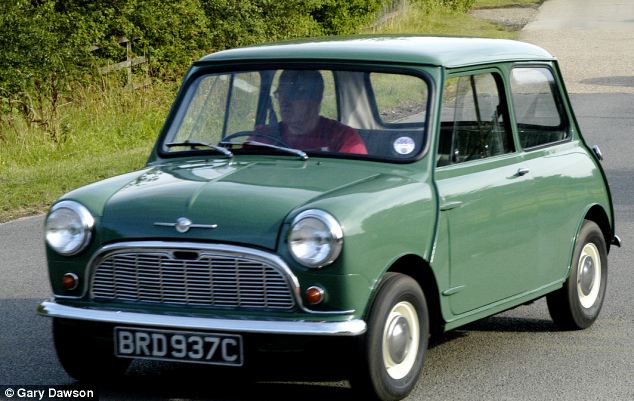
Winner: The Original 1960's Mini Cooper was voted the greatest car ever to be built and assembled in Britain
Images courtesy and © of Gary Dawson and the Daily Mail
However not a single model from the stables of Ford, Vauxhall or Rover makes the top ten, despite being among the best selling and most iconic UK-built motors ever. The poll for Autocar comes as Britain prepares to produce more cars on these shores than at any other time in its history.
Although most of the manufacturers are foreign owned, the likes of Toyota, Nissan, Land Rover and BMW MINI are choosing the UK to mass produce models, mainly for export.
The legendary Mini, designed by Sir Alec Issigonis, was a cultural icon which revolutionised the car industry - despite never being profitable. Production of the original Mini ended in 2000 with BMW reviving the name the following the year with its hugely successful Oxford-built range.
It topped the list followed by the original Range Rover and the iconic E-Type Jaguar and the sturdy Land Rover.
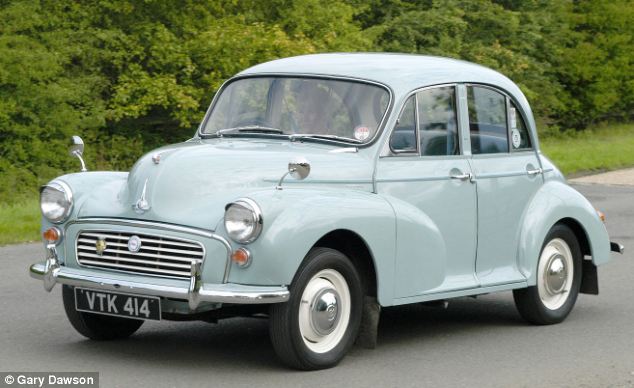
A classic 1957 Morris Minor is displayed at a car show, the iconic car won the eight spot in the Autocar poll
Images courtesy and © of Gary Dawson and the Daily Mail
Others voted in the top ten were two models by McLaren as well as the classic Morris Minor and the traditional London black cab. Some classic British makes were left out completely such as Ford’s famous ‘Made in Dagenham’ models from the Cortina to the Fiesta as well as luxury brands Aston Martin and Rolls Royce Autocar editor-in-chief Steve Cropley said: ‘The Mini had many faults and was never profitable, but it rewrote the rules and had the biggest impact on Britain’s car industry that any car has had.
‘It was one of the most remarkable cars ever built, what with its seating for four plus a decent boot in its mere 10-foot length. ‘The Mini’s influence is highly visible in every VW Golf or Ford Focus today, and the legend will live forever.’
By 2015 the British-based car industry is set to produce more vehicles than at any other time in its history, smashing the two million cars a year barrier and overtaking the previous high of 1.92 million from 1970.
More than 80 per cent of production will be exported but manufacturers like Honda and Nissan and Jaguar are to launch new models which will be built in the UK by 2015. Last year saw 1.34 vehicles produced in the UK with almost half a million alone by Nissan in Sunderland and around 240,000 by Land Rover in Halewood and Solihull.
Mini produces close to 200,000 cars a year and Vauxhall a further 137,000 from its Ellesmere Port plant.
Featured here the Mail on Sunday's Live Magazine Top 10 Greatest Car Designs - By STEPHEN BAYLEY, Design expert and author.

The humble mini to the Volkswagen Beetle: Ten of the greatest car designs
From the most influential car ever built with its astonishing range of innovations to the vehicle designed for Hitler and technically known as the Porsche Type 60, STEPHEN BAYLEY chooses his favourite vehicle creations.
1. FORD MODEL T - 1908
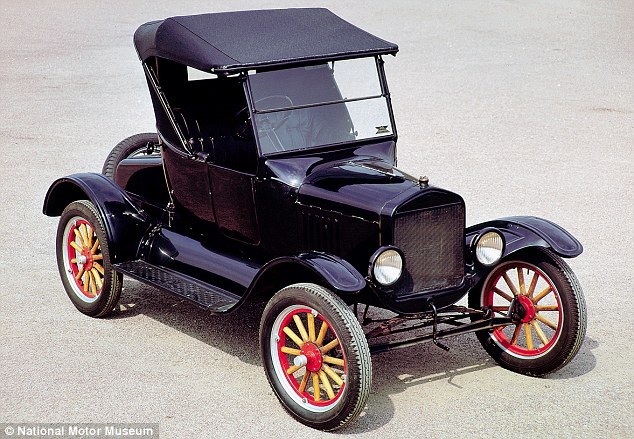
Henry Ford said he had to invent his 'gasoline buggy' to escape the crushing boredom of life on the farm. Ever since, cars have been escape vehicles.
Germans may have invented the petrol engine, but it was Henry Ford, a Michigan-Irish farmer of crude, but inspired, genius who realised its social potential. Ford said he had to invent his ‘gasoline buggy’ to escape the crushing boredom of life on the farm. Ever since, cars have been escape vehicles. Ford was obsessed with efficiency: his production lines were inspired by the meat-packing yards of Chicago. His famous decree that customers could choose ‘any colour so long as it is black’ was not to limit consumer choice, but to reduce costs: in Ford’s day, freshly painted cars were left in the sun to dry. Black dried more quickly and was thus cheaper. By 1914, a Model T could be manufactured in 93 minutes and in Brave New World Aldous Huxley proposed a new calendar based on the Year Of Our Ford. Spare parts were all available through the Sears Roebuck mail-order catalogue.
2. MINI - 1959
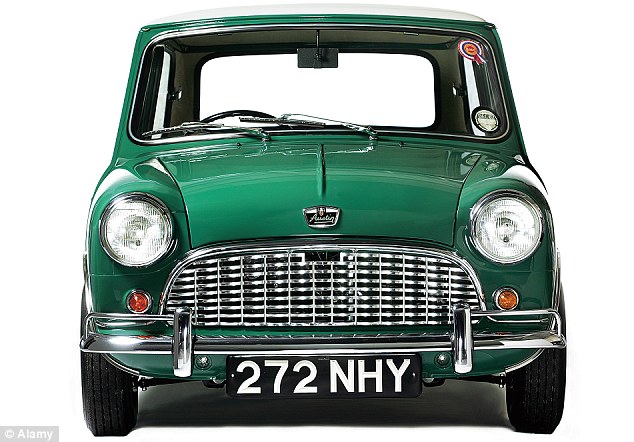
The Mini included an astonishing range of innovations: front-wheel drive, a transverse engine (with gearbox in the sump to save space) and 10in wheels.
Not the most beautiful, but the most influential car ever. The designer, Alec Issigonis, was obsessed by ‘packaging’, the industry term for efficient accommodation. The Mini included an astonishing range of innovations: front-wheel drive, a transverse engine (with gearbox in the sump to save space) and 10in wheels. Because it was so aesthetically and technically radical, it was impossible for traditional British snobs to categorise it, and it became the first small car to be socially classless.
3. JEEP - 1941
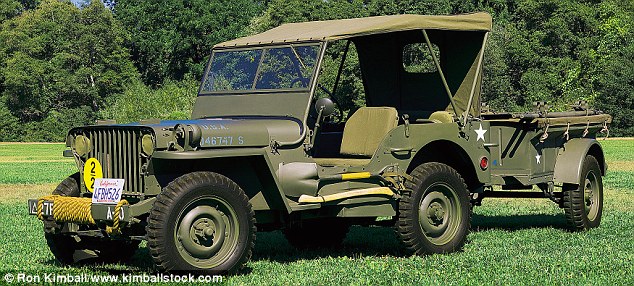
President Eisenhower said that, along with the C-47 Dakota transport plane, the Jeep was the most significant piece of WWII military equipment.
The predecessor to the Jeep was a military version of the Model T, but when the U.S. government issued a request for bidders, the result was another timeless and ineffable design. The contract was eventually won by the Willys Overland Company. ‘Jeep’ may be a phonic contraction of ‘general purpose vehicle’ or it may refer to a Popeye character called Eugene the Jeep, while army slang used the word to suggest anything lazy and worthless. Eisenhower said that, along with the C-47 Dakota transport plane, the Jeep was the most significant piece of WWII military equipment. We admire it for its absolutely irreducible functionality.
4. VOLKSWAGEN BEETLE - 1938
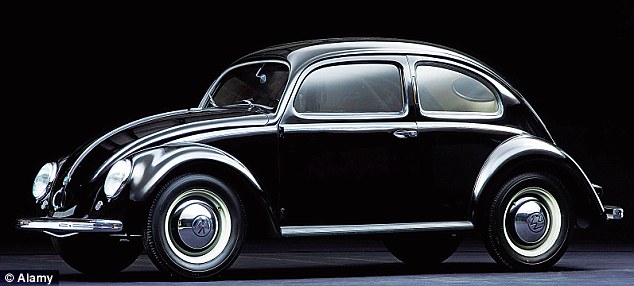
At some point in the Thirties a design by Austro-Hungarian Bela Berenyi for a teardrop-shaped car with a rear engine seems to have entered National Socialist consciousness in Germany.
The German Nazi party was committed to mobilising the people (‘volk’), and at some point in the Thirties a design by Austro-Hungarian Bela Berenyi for a teardrop-shaped car with a rear engine seems to have entered National Socialist consciousness. This was developed for Hitler by Dr Ferdinand Porsche and technically known as the Porsche Type 60. In 1936 Hitler decided the project should be sponsored by his Kraft Durch Freude (Strength Through Joy) movement and the cars were first known as the Kraft Durch Freude Wagen. Production did not begin until after 1945, British occupation forces having rejected taking over the VW factory since they thought the car had no future. In the event, Beetle production lasted in Germany until 1978 and in Mexico until 2003.
5. '49 FORD - 1949
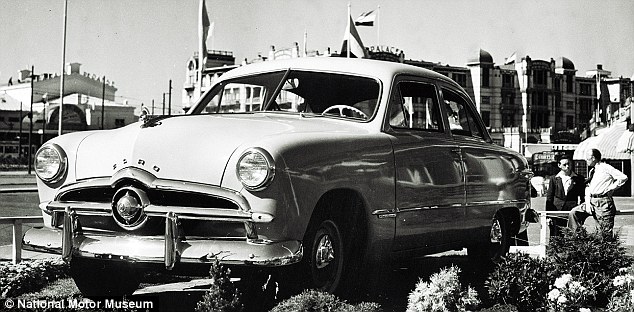
The '49 Ford was a technologically simple car, but commercially revolutionary. It came about as the result of a design competition, with Ford's own designers competing against freelancers.
Rival General Motors produced more flamboyant styling, but it was the ’49 Ford that brought modern car design to the American masses. Ford’s Ernest Breech had said: ‘I have a vision. We start from scratch.’ It was a technologically simple car, but commercially revolutionary. It came about as the result of a design competition, with Ford’s own designers competing against freelancers. The winning idea was created in a suburban kitchen, although one of the team involved was George Walker, who became Ford’s design director in 1955 – Time magazine called him the ‘Cellini of chrome’. New in 1949 was the sculpted, integrated shape: the idea of a popular car as a desirable consumer product. Ford’s current creative director, J Mays, says: ‘It’s so much closer to the cars that followed it and so unlike the cars that immediately preceded it.
6. MERCEDES-BENZ 300SL - 1961

Signature features of the Mercedes-Benz 300SL are the gull-wing doors hinged at the roof. Never mind the advanced and very light and rigid structure, as sculpture, the 300SL was totally original.
No single car better demonstrates the German inclination to become an ubermensch (superman) when left alone to design and manufacture an advanced automobile. The 300SL (the abbreviation is for ‘Super Light’) came about when the U.S. importer said he could sell 1,000 road-going versions of the Mercedes-Benz that had won the 1952 Le Mans 24 Hours race. Design was by Friedrich Gieger with engineers Karl Wilfert and Walter Hacker, although the colourful French sculptor-designer Paul Bracq also had a role. Signature features are the gull-wing doors hinged at the roof. Never mind the advanced and very light and rigid structure, as sculpture, the 300SL was totally original. Crisp details give a confident, graphic clarity. It is not, however, all race car-derived functionalism: Bracq added a fake power bulge on the bonnet and, long before ‘branding’ became an obsession, the 300SL featured a very prominent three-pointed star as the commanding feature of its nasal intake.
7. JAGUAR E-TYPE - 1961
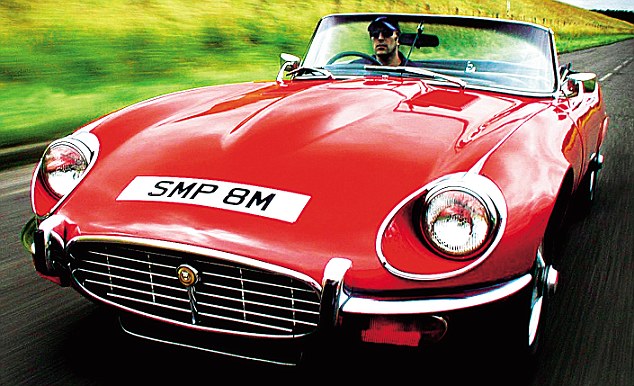
The Jaguar E-type has been called the 'optimum expression of steel'. The design checklist is: stance, proportions, composition, details, symbolism. The E-type ticks every one.
A direct descendant of the Jaguars that dominated Le Mans in the Fifties, the E-type is the most beautiful and exciting car ever to have gone into mass-production. Significantly, no ‘designer’ was involved. Instead, it was the product of the genius of Sir William Lyons, the man who founded Jaguar, and his aerodynamicist, Malcolm Sayer. The E-type has been called the ‘optimum expression of steel’. The design checklist is: stance, proportions, composition, details, symbolism. The E-type ticks every one. However, economies were involved in its production; the rear lights are borrowed from a contemporary Jaguar saloon, but turned on their sides. The E-type was the first production car to be acquired for the permanent collection of New York’s Museum of Modern Art.
8. FIAT 500 - 1957
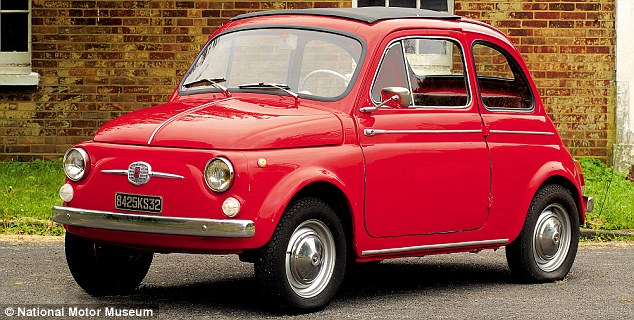
Perhaps the smallest viable four-seater ever made, the Fiat 500 was designed to work its cute way through narrow Italian streets. Simplicity and economy were to be decisive.
Along with the Vespa scooter, the Nuova Cinquecento (New 500) is the favourite symbol of 20th-century Italy. Perhaps the smallest viable four-seater ever made, it was designed to work its cute way through narrow Italian streets. The designer was Dante Giacosa and this successor to the pre-war Topolino was conceived in the ricostruzione, Italy’s period of reconstruction. Simplicity and economy were to be decisive. For cheapness, the car has (nearly) flat glass, but clever contouring of the body panels give it a generous aspect. The 500 remained in production until 1975. Yet its appeal endures: in 2007 Fiat introduced a re-edition paying homage to Giacosa’s original.
9. CITROËN DS -1955

The engineering of the Citroën DS was directed by Pierre Boulanger (killed testing a prototype), who had told his team: 'Study all the possibilities, including the impossible'.
To many, the DS is the single greatest car ever made, an unrepeatable combination of bold art with advanced technology. The body was drawn by Citroën’s chief designer, Italian sculptor Flaminio Bertoni, who had exhibited with the Surrealists. The engineering was directed by Pierre Boulanger (killed testing a prototype), who had told his team: ‘Study all the possibilities, including the impossible.’ Specification included self-levelling suspension, power brakes, a plastic roof and an automatic clutch. The French philosopher Roland Barthes wrote a rhapsodic essay about the car, calling it ‘the very essence of petit-bourgeois advancement’.
10. SMART - 1998
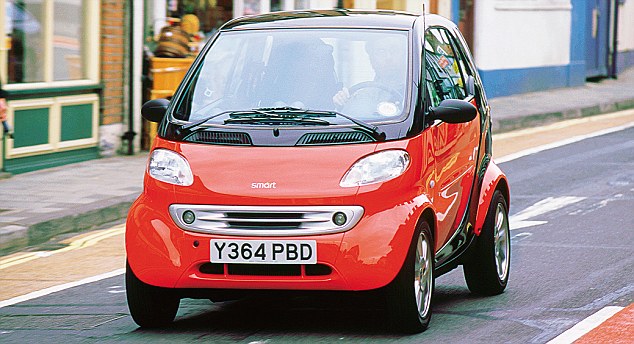
Smart became a joint venture with Mercedes-Benz in 1994, with the new vehicle aimed at addressing the problems of congestion and pollution, but in an amusing, pleasurable and streetwise fashion.
Smart has many shortcomings: terrible ride, weird transmission and an inclination towards instability – many early versions were photographed in German magazines up-ended on their tails like struggling ladybirds. But it is the most radical re-think of what a car should be since the Mini. Originally a project of Swatch (which revolutionised the staid Swiss watch industry), early development was in California as the Swatchmobile. It became a joint venture with Mercedes-Benz in 1994, with the new vehicle aimed at addressing the problems of congestion and pollution, but in an amusing, pleasurable and streetwise fashion. The ultra-strong and safe steel frame is made into a visual feature, while the plastic body panels are recycled and replaceable. Within an improbably tiny footprint, the car offers two passengers the same comfort and convenience (but much, much more manoeuvrability) as a full-sized saloon. Like the Mini, smart’s designers realised that a small car doesn’t have to economise on pleasure.
STEPHEN BAYLEY PICTURE BYLINE: Rebecca Reid / eyevine
Page refreshed : 19th November 2018 (G)